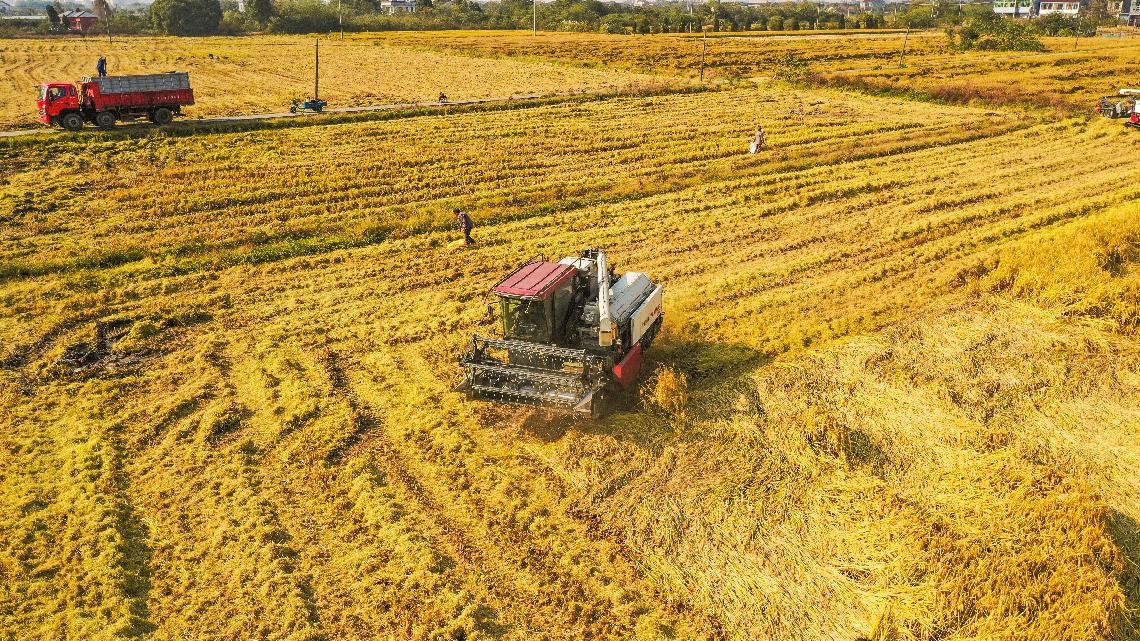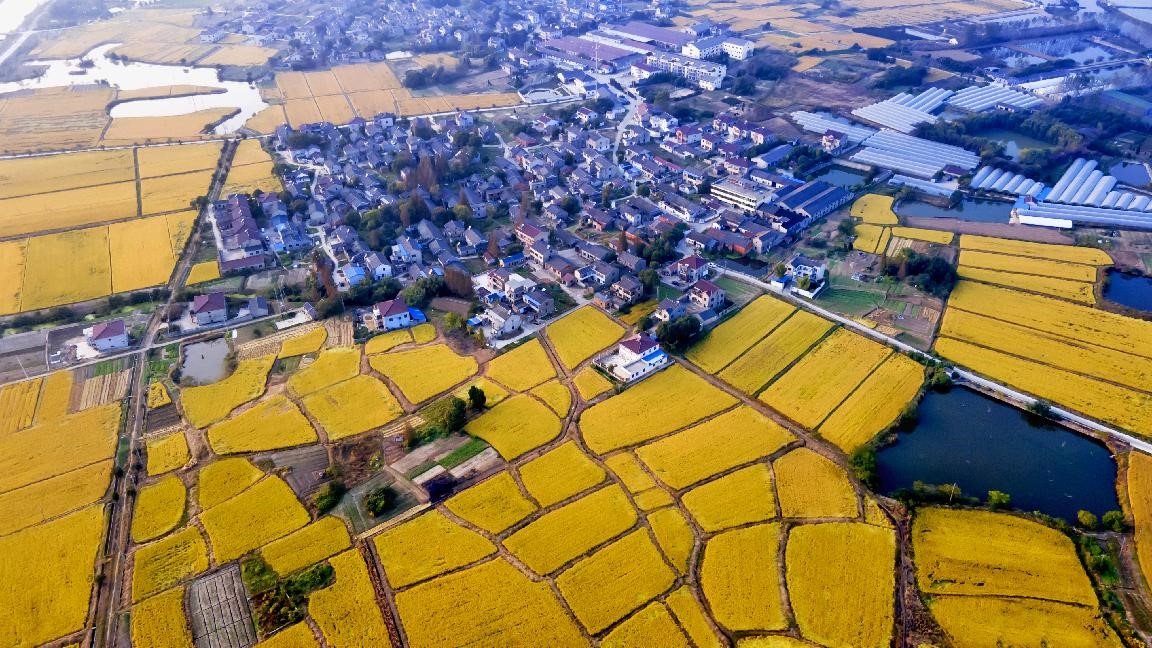China's grain output reaches 683 bln kilograms, hits new record
China saw its 18th consecutive bumper year in 2021 as the country's grain output grew by two percent, or 13.35 billion kilograms from a year ago to a record high of nearly 683 billion kilograms, according to the National Bureau of Statistics (NBS).

Farmers reap rice in Qianjin township, Nanxun district, Huzhou, east China's Zhejiang province, Nov. 15, 2021. (People's Daily Online/Fu Lijia)
It marked a 7th straight year that the country reported total grain production of over 650 billion kilograms.
"The bumper harvest this year offers a solid foundation for China to ensure food security, cope with complex and volatile domestic and international environments, overcome risks and challenges, and achieve high-quality development," said Wang Minghua, an NBS official.
The steady growth in grain sowing area is a primary contributor to the harvest. Wang introduced that in 2021, local governments across the country have taken efforts to ensure that duties of grain production are fulfilled and implemented the most strict farmland protection rules, so as to prevent the use of arable land for non-farming purposes.
They also further strengthened support for grain production, and encouraged reclamation of abandoned land and the exploitation of farmland in the winter fallow season, to raise the enthusiasm of farmers, said the official.
The total grain sowing area of China increased 0.7 percent to 1.76 billion mu, or 117.6 million hectares. The number has kept rising for two years in a row.
The harvest can also be attributed to the popularization of agricultural technologies.

Rice are ripe in Hubin village, Guyang township, Dantu district, Zhenjiang, east China's Jiangsu province, Oct. 30, 2021. (People's Daily Online/Wei Xueliang)
"The production of rice this year stands at 750 kilograms per mu at least, 100 kilograms more than that in the previous years. It is the best performance in the recent years," said Jin Quan, a rice grower in Huayuan village, east China's Jiangsu province, where agricultural drones are employed for higher farming efficiency and lower consumption of pesticides and fertilizers.
This year, precise and quantitative rice cultivation technique has been applied in over 23 million mu of farmland across the province.
In Datong Hui and Tu autonomous county, northwest China's Qinghai province, high-quality seeds are making bumper harvests. "The corn and potato varieties we have bred are helping farmers get rich," said Bao Jidong, head of a local seed breeding cooperative. The new varieties have led to a significant rise in per unit yield of the crops.
Technologies are improving China's comprehensive capability in grain production, and the expanding planting area of corns, a high-yielding crop, is also driving the increase in per unit yield. A sample survey indicated that the grain output per mu was 387 kilograms this year, increasing 1.2 percent, or 4.8 kilograms from a year ago.

An agricultural drone is applying fertilizer over a paddy field in a farm in Susong county, Anqing, east China's Anhui province, Sept. 8, 2021. (People's Daily Online/Li Long)
Floods, droughts and plagues of insects have sounded alarms for grain production this year. Especially since late September, some major grain-producing areas have been hit by continuous rains, which negatively impacted the autumn harvest. The Ministry of Agriculture and Rural Affairs responded swiftly and dispatched teams and experts to severely afflicted areas to offer technical guidance. The ministry also helped affected farmers to drain the fields, reap the crops and plant wheat, which mitigated the losses of them.
Wang noted that the meteorological conditions in most grain-producing areas across the country have been generally in favor of the growth and production of grain crops this year, though grain output in some regions was affected by adverse weathers.
In 2021, the yields of summer grains and early-season rice were respectively 146 billion kilograms and 28 billion kilograms, up 3.1 billion kilograms and 700 million kilograms from a year ago. The output of autumn grains also went up by nearly 9.6 billion kilograms to 508.9 billion kilograms.
A German news site said that the harvest of the populous country will alleviate the global food shortage.
Given the spreading pandemic, complicated international situation, and frequent occurrence of extreme natural disasters, the harvest of China is a reminder that agriculture is playing an even larger role in stabilizing the society and economy, and that the country remains firm in its commitment to pursuing food security, said Li Guoxiang, a researcher with the Rural Development Institute, Chinese Academy of Social Sciences.
Photos
Related Stories
- China secures another bumper autumn harvest as growing season comes to an end
- China's high-quality grain projects boost domestic agriculture development
- China sees good autumn grain production despite disasters: official
- China on the move to ensure grain production, security
- China expects bumper grain harvest as planting acreage rises
- China’s summer grain output to hit record high
Copyright © 2021 People's Daily Online. All Rights Reserved.










